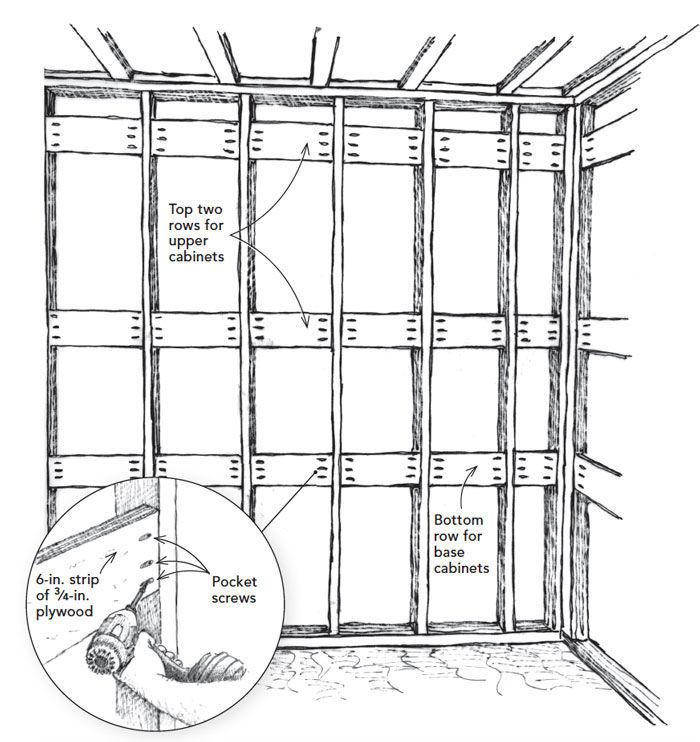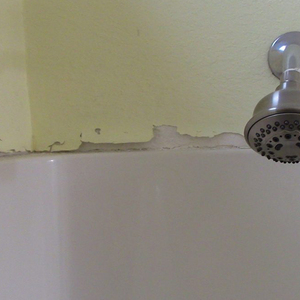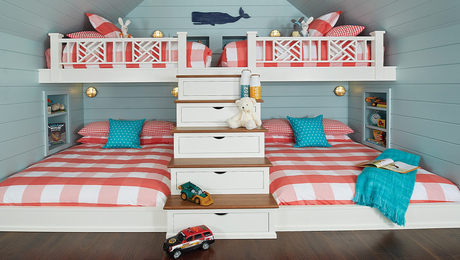Better Cabinet Blocking
Plywood and pocket-hole screws make for a clean, sturdy installation.

It’s always a good idea to have solid blocking behind drywall for fastening upper and lower cabinets. Instead of dimensional lumber, I use scraps of 3⁄4-in. plywood cut into 6-in. strips. The plywood leaves more room for insulation and is less likely to split than solid stock. After cutting the strips to fit snugly between the studs, I use a pocket-hole jig to drill holes in both ends of each strip. I flush the plywood to the face of the studs and secure it with pocket-hole screws. I use two strips behind upper cabinets for fastening each cabinet, top and bottom, and one row at the top of the base cabinets. After the blocking is in place, I install the drywall as normal. This blocking method also works for television mounts and other wall-hung items.
—Keith McNeil, Halifax, N.S., Canada
Edited and Illustrated by Charles Miller
From Fine Homebuilding #280






























View Comments
hello keith my northern friend,
if space and budget allow i like to just nail and glue sheets of 3/4 ply directly on stud wall in any area that will be getting cabinets or might in the future. makes life so much easier and faster. time is money
best to you, carl
My first thought as well since I’ve done it before.
The assembly can also integrate as shear paneling where required.
Plus the sheathing leaves even more space in the stud cavity for insulation if it’s an exterior wall.
In my humble opinion, there are perfectly good nailers in the wall already, the studs! All that blocking takes time and isn’t necessary, just do a quick check to make sure each cabinet has two studs to nail to and only add blocks if necessary. Photograph everything before sheetrock goes on and find those studs later with a magnet.